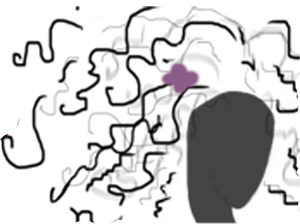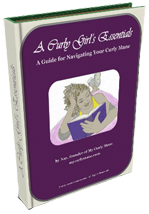You probably have noticed that I’ve been doing some research on the science behind our natural hair.
You say: Luuuuccy, you’ve got some ‘splaining to do!
I say (throws hands in the air): But Riiiicky, let me explain!
In case that all went over your head, you gotta catch at least one episode of I Love Lucy–throwback!
Back to my point. I basically wanted to nail down and discuss (in an easily digestible way) some of the key items that affect our hair. This includes all the things that I skipped learning about while I was also learning to embrace my natural hair … for the second time!
Yes, you got that right. A few years ago, I decided to embrace my curly hair (during round two, following straightening addiction), but I overlooked some important elements becaaaause … weeeelllll … there was all this talk about all sorts of scientificy stuff. Ain’t nobody got time for that (folds hands at chest)! Well, at least that’s what I initially thought until I realized that it was taking forrrreeevvvver for my hair to grow! I decided that it couldn’t hurt to do some hair homework.
Between that time and now, I’ve gathered some information, which has been included in my new free, e-book (shameless plug). One of those topics that you need to know about is discussed below–humectants. In case you’re not quite sure how these suckers work, I’ve broken it down for you below. Have no fear, Super Nay is here! 😉 Read more after the jump.
What Are Humectants?
Humectants are ingredients and/or products that promote moisture retention. I won’t delve too deeply into compounds and molecules. Just know that these items have a chemical structure that attracts water from the atmosphere and binds it to the molecule. In other words, humectants are attracted to moisture, whether it is in your hair or in the atmosphere, but they work best in moderate climates.
What’s The Impact of High Humidity?
When it is highly humid outside, there is a large amount of water vapor in the air. Dry and damaged hair that is free of products aka porous, thirsty tresses (read more about porosity for detailed information) will naturally seek to absorb the moisture in the air. However, taking in such a large amount of moisture will make your hair full … to the point of swelling and lifting the cuticle layer (the outer layer of hair). This will create frizzy and tangled hair.
Now, if you have a humectant in your thirsty tresses, this will only exasperate the problem. Your hair will become soggy, sticky, and poofy all at once! Recalling a few instances?
What’s The Impact of Low Humidity?
When the humidity is minimal, as seen on most dry, winter days, there isn’t a lot of moisture in the air. If your hair is styled with a product that contains humectants, these items will either:
- Hang onto the moisture in your hair and prevent it from evaporating. This may or may not prove to be successful. Your best bet is to stick with moisturizing products, like leave-in conditioners.
- Remove moisture from your hair’s cortex and send it into the air. Remember that thing about attraction? Your hair will do this because it so kindly believes that the air needs the moisture, of course. Unfortunately, this will also dry out your hair.
What Are Some Examples of Humectants?
Before you use any product, you should read the ingredients to see whether or not humectants are included. This will help you to better prep your hair for the current humidity levels. In other words, you’ll say “aha!” whenever your hair decides to rise up and become a frizzilicious ball on your head.
Just so you have a heads up, here are a few popular humectants found in hair care products:
- Agave Nectar
- Aloe Vera Gel
- Fructose
- Glycerin
- Honey
- Hydrolyzed silk protein
- Panthenol
Now that you’ve got it down, are you ready to take on humidity with humectants? Wham! Bang! Zing!








